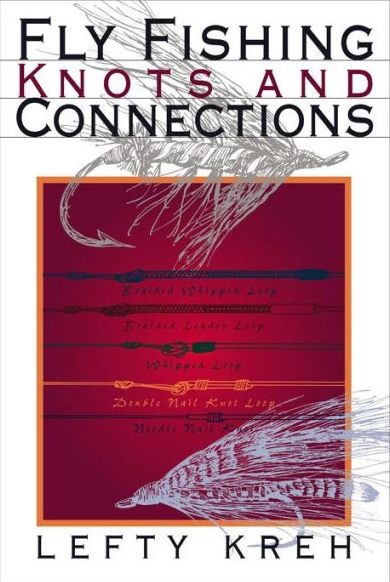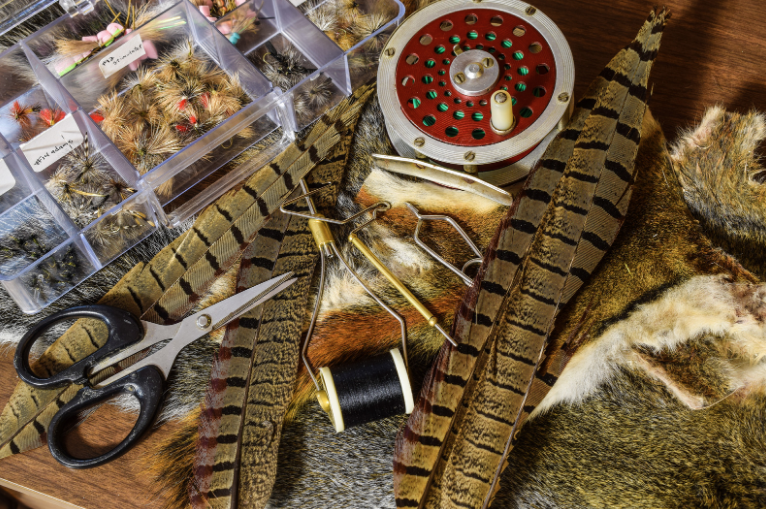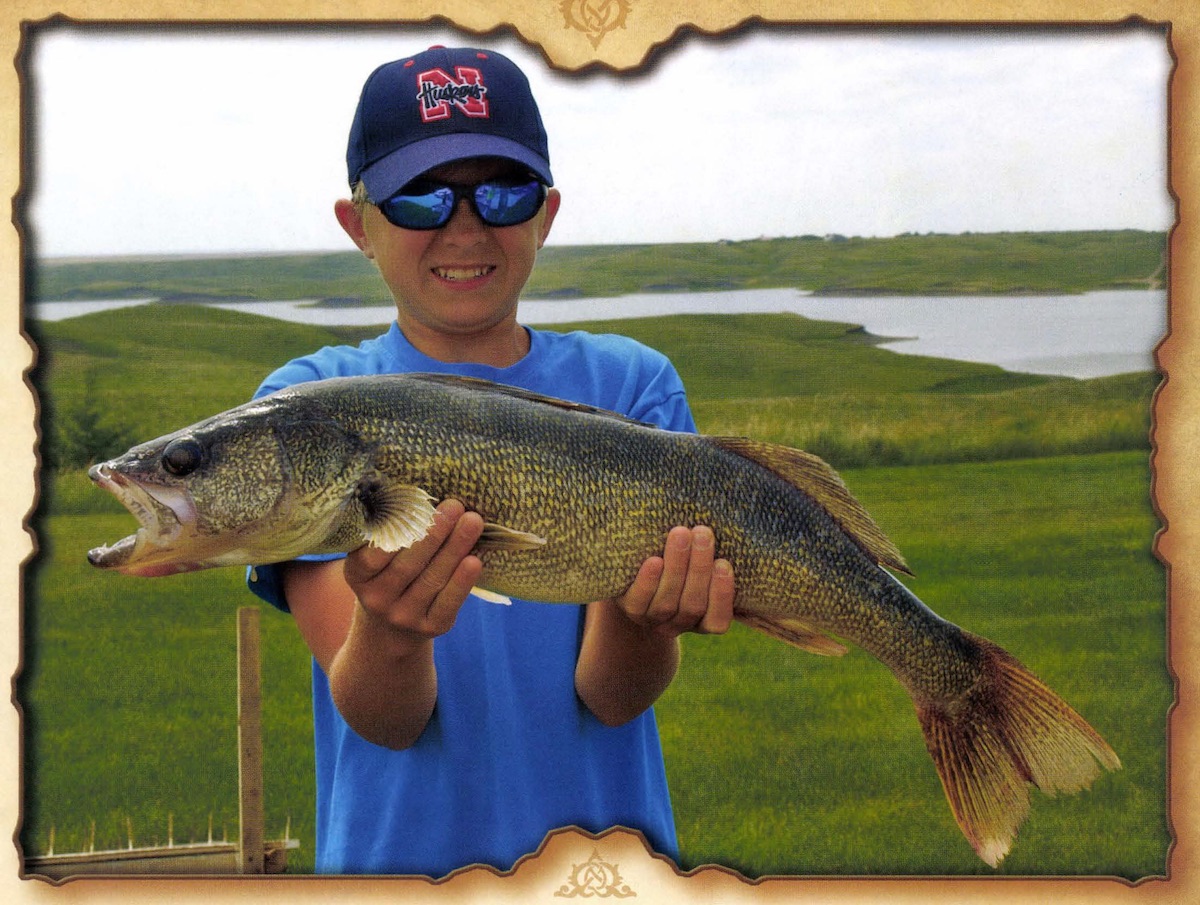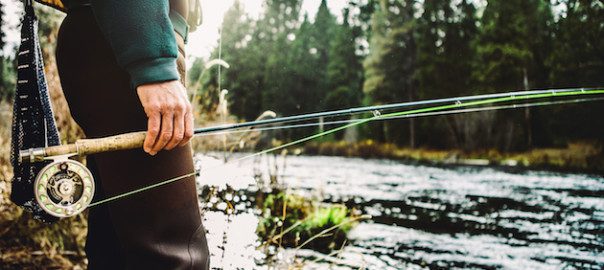I didn’t get a lot from my extended family while growing up, but perhaps the most important thing was the memory of grandpa’s tying bench.
I grew up with a perfectly modern example of a dysfunctional extended family. Aunts and uncles drifted in and out of rehab, cousins had kids before junior prom, and I never really knew my grandparents.
I’m not complaining, nor trying to throw anyone under the bus. That’s just the reality I grew up in. I didn’t get the usual benefits of a big extended family, but I guess I did avoid the pitfalls of Everybody Loves Raymond-esque family drama.
One thing I did get from my extended family, though, was a fascination with fly tying.
My grandfather—who taught my dad to fly fish, who then taught me to fish—tied flies commercially for 27 years before his eyes gave out on him. He still ties the occasional olive leech or gray ghost, but for the most part, he’s hung up his whip finish tool for good.
The handful of times I visited his house when I was young, his tying desk was always littered with marabou feathers, saddle hackle, hooks, tinsel, and peacock feathers. Letting me loose near his tying desk was like giving a kid the keys to a candy store.
As I grew up and graduated from the spinning rod to my dad’s fly outfit, the curiosity of the tying bench never left. I consistently swiped flies from my dad’s tying bench in the same way most kids try to sneak a beer—I wanted a taste of what it was like to be a refined, knowledgeable angler who understood flies so well he could tie them from memory alone.
Bear in mind, at this point in life I thought that an Adams was an actual fly, not merely a well-designed one-size-fits-all imitation of flies. That’s not the fault of my dad’s teaching skills, just a statement on my learning ability.
Not long after I finally got my driver’s license (I grew up in a rural community where I drove cattle trucks at 14, but I was 16 and a half when that activity became legal), I was up fishing the creek near my childhood home. It’s not a special piece of water; in fact, it’s pretty subpar by the lowliest of trout standards. But it’s home water and shaped how I fish today, so it’ll always be special.
One pool on that creek always holds rising trout, and I spent an afternoon there instead of in class. My dad’s fly rod whipped through the air (literally whipped, because, once again, I didn’t know much of anything about fly fishing at that point), but despite the horrible casts and bad presentation, I landed a few fish.
After the fourth or fifth rainbow splashed back to the creek, I looked at the fly. It was more thread than dubbing and hackle. I shrugged, reaching into my dad’s vest for another of his flies.
I quickly ran into a problem: Either my dad hadn’t tied more of those flies, or I’d used (lost) all of them.
When I got home and explained my predicament to my dad, he said, “It sounds like it’s time to tie your own flies.”
“Where do I start?” I asked.
Five hours later, I produced an elk-hair caddis that looked roughly like a caddis should. My dad’s patience was as frayed as the thread I’d broken while tying the fly.
That weekend I took the fly to the creek. Those rainbows aren’t picky, and after a few casts I pulled one in. The feelings about catching my first trout on a fly I tied is one for another day. I promptly lost that fly, drove home, and plunked myself down in front of my dad’s tying bench.
I didn’t realize it then, but I’d replicated the same scene impressed on my mind at grandpa’s house. I didn’t get a lot from my extended family while growing up, but perhaps the most important thing was the memory of grandpa’s tying bench.
 You’ve come to fish at the right time, selected the correct lure, made the perfect presentation and the fish of your lifetime has taken your offering. Your chances for fighting and landing it are now as strong as the weakest link in the line between your reel and the fish. Is now the time to wonder whether the materials you selected and the knots you tied were the best choice for the conditions? In Fly-Fishing Knots and Connections, legendary fly fisherman Lefty Kreh tells anglers everything they need to know about what may be the most crucial aspect of successful angling-the connections between the reel, backing, fly line, leader and tippet. Buy Now
You’ve come to fish at the right time, selected the correct lure, made the perfect presentation and the fish of your lifetime has taken your offering. Your chances for fighting and landing it are now as strong as the weakest link in the line between your reel and the fish. Is now the time to wonder whether the materials you selected and the knots you tied were the best choice for the conditions? In Fly-Fishing Knots and Connections, legendary fly fisherman Lefty Kreh tells anglers everything they need to know about what may be the most crucial aspect of successful angling-the connections between the reel, backing, fly line, leader and tippet. Buy Now




